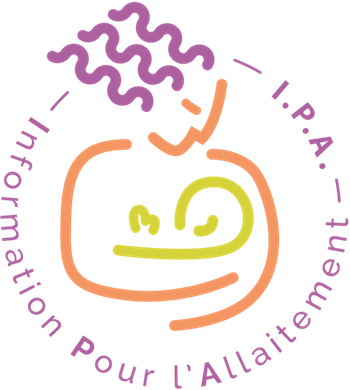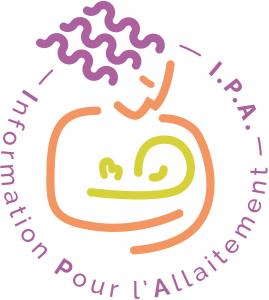Catégories
Documents disponibles dans cette catégorie (35)
 Ajouter le résultat dans votre panier Faire une suggestion Affiner la recherche
Ajouter le résultat dans votre panier Faire une suggestion Affiner la rechercheBulletin : texte imprimé
Hot Milk, n°7 - Printemps 2017
2017Article : texte imprimé
Article : texte imprimé
Ruth Newby, Auteur ; Wendy Brodribb, Auteur ; Robert S. Ware, Auteur |This report describes information sources accessed by pregnant women around antenatal and early infant diet. Australian women in their first pregnancy (n=277) responded to questionnaires online and on paper between June 2010 and March 2011 as pa[...]Article : texte imprimé
Despite benefits to breastfeeding, the frequency of exclusive breastfeeding is less than recommended and most mothers discontinue breastfeeding earlier than recommended. A mother's experience of breastfeeding could affect how long she breastfeed[...]Article : texte imprimé
Yun Zhao, Auteur ; Yan-Qiong Ouyang, Auteur ; Sharon R. Redding, Auteur |Objective: To explore Chinese adults’ perceptions and attitudes toward breastfeeding in public places. Materials and Methods: This was a web-based survey including 10 items on breastfeeding participants (N = 2,021) who were recrui[...]Article : texte imprimé
Kevin Wong, Auteur ; Punam Patel, Auteur ; Michael B. Cohen, Auteur |Introduction: Breastfeeding difficulty from ankyloglossia can affect both the mother and baby in a breastfeeding dyad. With renewed emphasis in today's culture on breast milk, mothers may feel increasing pressure to breastfeed, and the inability[...]Article : texte imprimé
Nicole Bridges, Auteur ; Gwyneth Howell, Auteur ; Virginia Schmied, Auteur |Employing an online ethnographic research approach, the purpose of this study was to describe the nature of breastfeeding peer support that members seek and receive via closed Facebook groups facilitated by the Australian Breastfeeding Associati[...]Article : texte imprimé
Shamini Ramoo, Auteur ; Tuyet Anh Trinh, Auteur ; Jane Elizabeth Hirst, Auteur |Background: The benefits of breastfeeding to both maternal and infant health are vast and widely known. The aim of this study was to elicit the rates of exclusive breastfeeding, early initiation of breastfeeding, and colostrum feeding and to det[...]Article : texte imprimé
Sheela R. Geraghty., Auteur ; Kelly A. McNamara, Auteur ; Chelsea E. Dillon, Auteur |Background: For past centuries, infants have been fed the milk of mothers who are not their own by latching to another woman's breast. Today, the majority of lactating women use electric pumps to extract milk from their breasts; thus, an infant [...]Article : texte imprimé
Nicola Geoghegan-Morphet, Auteur ; Doris Yuen, Auteur ; Esther Rai, Auteur |Exclusive breastfeeding is the optimal method of infant feeding for the first 6 months of life for both term and preterm infants. This recommendation is based on indisputable evidence that breastfeeding offers numerous infant and maternal health[...]Article : texte imprimé
Background: Stigma is a significant barrier to breastfeeding. Internationally, mothers have reported stigma surrounding public breastfeeding. In the United Kingdom, the Equality Act 2010 gives women the right to breastfeed in public, including [...]Article : texte imprimé
Sarah A. Keim, Auteur ; Kelly McNamara, Auteur ; Jesse J. Kwiek, Auteur |Background: Human milk purchased via the Internet poses a potential risk of recipient infant exposure to drugs, but this risk has not been quantitated by research. Our objective was to test milk we purchased via the Internet for 13 common classe[...]Article : texte imprimé
Sofia Colaceci, Auteur ; Angela Giusti, Auteur ; Elise M. Chapin, Auteur |Introduction: Breastfeeding training has a crucial role in increasing healthcare professionals' attitudes and in improving professional support for breastfeeding. The collaboration between the Italian National Institute of Health, UNICEF, and th[...]Article : texte imprimé
Dilek Orbatu, Auteur ; Suna Yildirim Karaca, Auteur ; Demet Alaygut, Auteur |Objective: In this study, we aimed to evaluate the quality, reliability, and utility of breastfeeding videos on YouTube. Materials and Methods: We conducted a YouTube search with the keyword “breastfeeding education” and limited our search re[...]Article : texte imprimé
Jennifer R. Thomas, Auteur ; Ulfat Shaikh, Auteur |"The Internet has become an important tool for patients seeking to expand their knowledge of health conditions and medications. Breastfeeding initiation and duration increase because of physician encouragement. Therefore, electronic communicatio[...]Article : texte imprimé
Roslyn Giglia, Auteur ; Kylee Cox, Auteur ; Yun Zhao, Auteur |Background: Exclusive breastfeeding for 6 months is acknowledged universally as the optimal feeding method for infants in order to provide the greatest health and well-being gains for the infant and mother. Despite this, many women stop short of[...]Article : texte imprimé
What do you tell your clients who ask if it’s safe to purchase breast milk over the Internet? Many International Board Certified Lactation Consultants likely explain the inherent risks in this purchase and try to help these women increase their [...]Article : texte imprimé
The process by which women came to donate milk via online milk sharing networks was explored via a questionnaire administered to 97 peer milk donors. Seventy-one respondents stated that they were motivated to donate milk because they wanted to h[...]Article : texte imprimé
Background: Although exposure and personal experiences can guide breastfeeding decisions, the extant research on African American mothers is limited regarding the influence of infant feeding exposure. The persistent race-based breastfeeding disp[...]Article : texte imprimé
Kelly A. Castro-Blanco, Auteur ; Rachel M. Marks, Auteur ; Sheela R. Geraghty., Auteur ; Julia P. Felice, Auteur ; Kathleen M. Rasmussen, Auteur |Background: In light of the widespread use of breast milk pumping, or, “pumping,” mothers are seeking clear, adequate breast pumping guidelines. We aimed at characterizing the information in web pages that mothers might find online when searchin[...]Article : texte imprimé
Ruth Newby, Auteur ; Wendy Brodribb, Auteur ; Robert S. Ware, Auteur |Background: Optimal nutrition during infancy has benefits to individuals and to society. Australian women actively seek health and nutrition information from a wide variety of sources and have extensive access to the Internet, but its efficacy [...]Article : texte imprimé
Beatriz M. Reyes-Foster, Auteur ; Shannon K. Carter, Auteur ; Melanie Sberna Hinojosa, Auteur |Peer breastmilk sharing has emerged in recent years as a subject of investigation and occasional controversy. Although researchers know that thousands of milk exchanges are facilitated through milk sharing Web sites every week, there is only lim[...]Article : texte imprimé
Maryanne Tigchelaar Perrin, Auteur ; Suzanne L. Goodell, Auteur ; Jonathan C. Allen, Auteur |Objectives: The Food and Drug Administration discourages the casual sharing of human milk because of the risk of pathogen transmission. No information is currently available on the prevalence of this practice. The purpose of this mixed-methods o[...]Article : texte imprimé
Breastfeeding is important for providing optimal infant nutrition and protection from many infectious and non-infectious conditions (Allen, Perrin, and Fogleman, 2013; Eidelman and Schanler, 2012). It is an ancient, but simple, public health mea[...]Article : texte imprimé
Roger A. Edwards, Auteur ; Rachel Colchamiro, Auteur ; Ellen Tolan, Auteur |Lack of health professional support is an important variable affecting mothers’ achievement of breastfeeding goals. Online continuing education is a recognized pathway for disseminating content for improving clinicians’ knowledge and supporting [...]Article : texte imprimé
Amanda L. Watkins, Auteur ; JE Dodgson, Auteur ; Darya Bonds McClain, Auteur |Background: Breastfeeding competencies are not standardized in healthcare education for any of the health professions. A few continuing education/professional development programs have been implemented, but research regarding the efficacy of th[...]texte imprimé
"Are you an aspiring private practice lactation consultant or have you recently started a lactation consulting business? If so, this is the book for you! Author Kathy Parkes, MSN-ED, BSPsy, RN, IBCLC, RLC, FILCA, has successfully started and run[...]Article : texte imprimé
JE Dodgson, Auteur |In the age of almost instantaneous communication between people on opposite sides of the globe and Twitter feeds relaying news as it happens, one might think that knowledge development occurs at the same speed. It does not. Although it is true t[...]Article : texte imprimé
This month's issue of Breastfeeding Medicine presents two studies focusing on the use of telemedicine in the support of breastfeeding programs. Padro-Arocas and colleagues describe the use of a mobile app (LactApp) in Spain. Utilizing Google ana[...]Article : texte imprimé
Roslyn Giglia, Auteur ; Colin Binns, Auteur |Breastfeeding is the normal and safest way to nurture an infant, and prolonged exclusive breastfeeding duration to 6 months will yield the greatest gains in optimum infant development. Despite this knowledge fewer than 35% of infants worldwide a[...]Article : document cartographique imprimé
Nicole Bridges, Auteur |The aim of this study was to advance understanding of the experiences of mothers using closed Facebook groups attached to the Australian Breastfeeding Association (ABA) and how these mothers find and share breastfeeding support and information u[...]Article : texte imprimé
Why do mothers want to provide their breastmilk to infants other than their own? Given the reality that this “activity” is primarily on an unregulated peer-to-peer basis, accurate comprehensive population data as the motivation of these mothers [...]texte imprimé
The Virtual Breastfeeding Culture: Seeking Mother-to-Mother Support in the Digital Age illustrates that since the advent of the digital communication, mothers have been using the Internet to support and connect with each other. Women have claime[...]Article : texte imprimé
Sheela R. Geraghty., Auteur ; Kelly McNamara, Auteur ; Jesse J. Kwiek, Auteur |Background: Chemicals inhaled or ingested by mothers can be present in their milk. Our objective was to determine levels of nicotine, cotinine, and caffeine in human milk purchased via the Internet. Materials and Methods: We purchased human m[...]






































